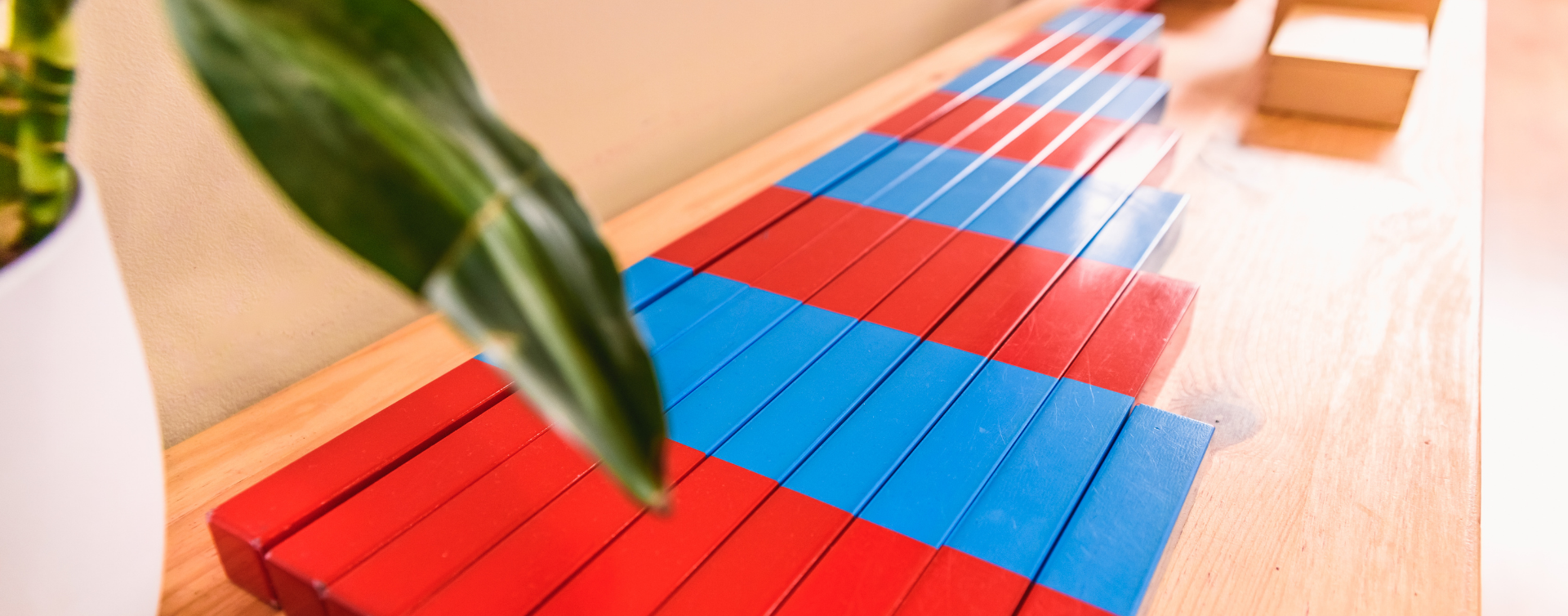Maths… Ask any new group of adult learners who is comfortable with and likes Maths, and the answer is generally an overriding negative. The most common responses include: “I never really got Maths”, “My teacher told me that I was useless at Maths”, and “I just can’t do it”. The problem with this scenario is that a Maths-fearful adult creates the next generation of Maths-fearful children.
We are currently busy with an apparatus workshop and have just completed the preschool Maths curriculum. As a lecturer, this is one of the most difficult areas of the Montessori materials to engage the students with due to their existing fears around the topic. We, therefore, spend the bulk of the time on understanding the early foundations of Maths through the preparatory work that the child has done with the Sensorial materials and the first ‘level’ of early (0-10) Maths.
The Large Number Rods start the child’s Montessori Maths journey. For the nature of the constructivist brain, this material lays a clear foundation for the concept of the size and quantity of the base of 10.
Having previously (ideally) worked with the Long/Red Rods, the child brings an understanding of linear dimension to the start of her/his Maths journey. After the rods are brought to the mat and are placed in a random order, we first invite the child to think back to what was done with the Long/Red Rods and build the Large Number Rods into a stair. This creates a comfortable bridge for the child between the two curriculum areas.
The direct objective of the Large Number Rods is for the child to count the fixed quantities of the red and blue segments on the rods. The child may have previously learned to rote count (by memory) from 1 to 10. This does not, however, mean that the child understands what these words actually mean! By spending some time counting the Large Number Rods, the child has the opportunity to make many discoveries:
- Counting each rod, one segment at a time, gives the child the opportunity to refine one-to-one correspondence skills.
- Each number counted corresponds to the same segment on each rod. (I.e. the first red segment of each rod is ‘1’, the second is ‘2’.)
- Each number increases by one segment. This is also an indirect preparation for later addition.
- The child gains both a visual and physical impression of the size and quantity of the number – 1 is small/short, 10 is big/long.
Having this solid foundation allows the child to make a far deeper connection with the symbols of Sandpaper Numerals that follow. When we now introduce the child to the written symbols of 1 to 10, s/he has formed a concrete impression of what these symbols represent. Piaget calls this ‘symbolic representation’, which is an integral part of the child’s developing cognition in the pre-operational stage of development. When learning the symbol for 1, the child already has a visual and physical impression of the first red rod and thus an understanding that 1 is a small number that precedes all other numbers. When the child learns the symbol for 5 (for example), s/he understands that 5 has 1, 2, 3 and 4 inside of it and is, therefore, bigger than all of these numbers, but smaller than the numbers that follow.
Too often, we move the children too quickly through these early exercises. By doing so, we rob the children of such valuable learning opportunities and create a shaky foundation upon which they need to build later, more abstract skills.
Let’s look at these early exercises again and respect what they have for the child to discover if we allow them this precious time.
– Susanne van Niekerk –
09 September 2020



